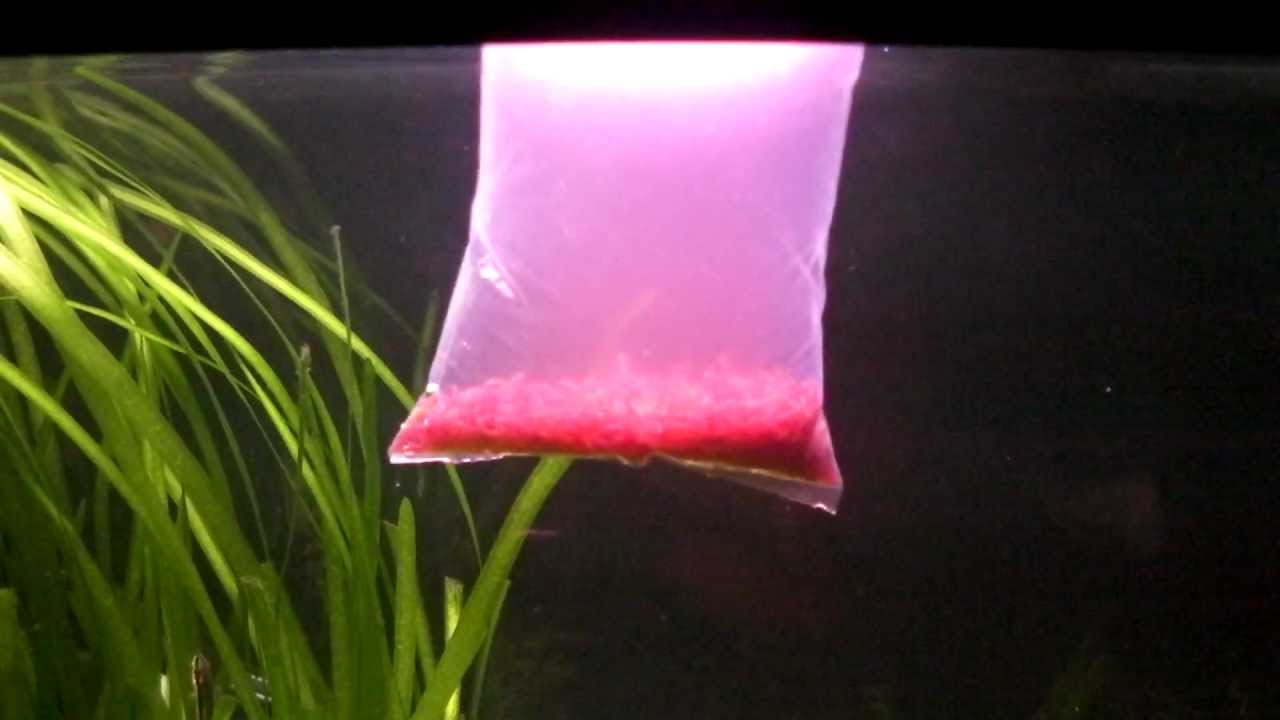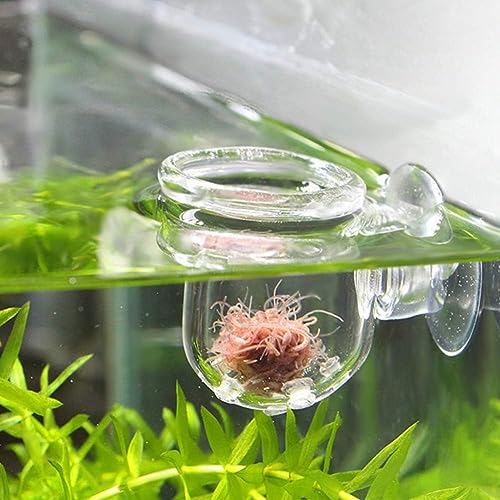Live blood worms Fish Food is a nutritious and popular fish food. They provide essential proteins and nutrients for aquarium fish.
Table of Contents
Live blood worms serve as a highly nutritious food source for aquarium fish. These small, red larvae are rich in proteins and essential nutrients. Fish keepers love them. Blood worms stimulate natural hunting behaviors in fish, promoting their health and well-being.
Feeding live bloodworms can enhance your fish’s colors and boost their immune systems. They are suitable for many fish species, including bettas, guppies, and cichlids. Buy them from good suppliers. This helps avoid harmful germs in your aquarium. Live bloodworms are great for your fish’s health and vitality.

Credit: www.youtube.com
Benefits Of live blood worms fish food
Live blood worms are a popular choice for feeding fish. They offer many benefits that can help improve your fish’s health and nutrition. Let’s dive into the key benefits of using live blood worms as fish food.
Nutritional Value of live blood worms fish food
Live blood worms are pack with nutrients. They provide high protein levels, crucial for fish growth and muscle development. Also, they have essential fatty acids, which help your fish stay healthy.
Here’s a quick look at the nutritional profile of live blood worms:
| Nutrient | Percentage |
|---|---|
| Protein | 50% |
| Fatty Acids | 15% |
| Vitamins | 5% |
These nutrients are vital for maintaining a balanced diet for your fish. Feeding your fish live bloodworms regular gives them the nutrients they need.
Enhanced Fish Health
Feeding your fish live blood worms can significant enhance their health. The high protein content promotes muscle growth and regeneration. This is especially beneficial for young and growing fish.
Live blood worms also stimulate your fish’s appetite. They mimic the natural hunting behavior of fish, encouraging them to be more active and alert. This increased activity can lead to better health and vitality.
- Live bloodworms help digestion. They’re easy to digest, so stomach problems are less likely.
- Eating regular makes your fish’s immune system stronger. That way, they’re less likely to get sick.
- Brighter Colors: Blood worms can make your fish look nicer by making their colors stand out more.
Adding live bloodworms to your fish’s diet can make them healthier and look better.

Credit: www.petzlifeworld.in
How To Feed live blood worms fish food To Fish
Feeding live blood worms to fish is an excellent way to provide them with a nutritious diet. Live blood worms are a favorite among many fish species. They are rich in protein and help keep fish healthy and active. In this section, learn about the best practices for feeding live blood worms to your fish.
Feeding Frequency of live blood worms fish food
Feeding frequency is crucial for maintaining fish health. Most fish enjoy fed live blood worms two to three times a week. Overfeeding can lead to water pollution and health issues.
Juvenile fish may need more frequent feedings. Consequently, you can feed them small amounts daily. On the other hand, adult fish usually thrive with less frequent feedings. Therefore, always observe how your fish react to the feeding schedule.
Proper Dosage
Proper dosage ensures your fish receive the right amount of food. Moreover, the amount of live blood worms to feed depends on the size and number of fish. As a general guideline, feed an amount they can consume in two to three minutes.
For easier understanding, refer to the table below:
| Fish Size | Recommended Dosage |
|---|---|
| Small Fish | 1-2 worms per fish |
| Medium Fish | 3-5 worms per fish |
| Large Fish | 5-10 worms per fish |
Always observe your fish during feeding. If they leave worms uneaten, reduce the amount next time. Healthy fish will eager consume the worms within minutes.
Storage And Handling Of live blood worms fish food
Live blood worms are a favorite fish food. Furthermore, they are nutritious and fish love them. Therefore, proper storage and handling are vital. Consequently, this keeps them fresh and safe for your fish.
Optimal Storage Conditions for live blood worms fish food
Store live blood worms in a cool place. A refrigerator is ideal. The temperature should be between 5°C and 10°C. This helps keep the worms alive and healthy.
Use a breathable container. This lets air in and out. Avoid airtight containers. They can suffocate the worms.
Change the water daily. Fresh water keeps the worms clean. It also removes waste. Use dechlorinated water. Chlorine can harm the worms.
Avoiding Contamination
Always wash your hands before and after handling live blood worms. This prevents the spread of germs.
Use clean tools. A small net or spoon works well. Avoid touching the worms with your hands. This can introduce bacteria.
Check for dead worms regular. Remove them at once. Dead worms can spoil the others. They can also spread disease.
Keep the storage area clean. Wipe down surfaces with a damp cloth. This removes dirt and bacteria. Sanitize the container once a week. Use mild soap and rinse well.
| Task | Frequency | Notes |
|---|---|---|
| Change water | Daily | Use dechlorinated water |
| Check for dead worms | Daily | Remove dead worms at once |
| Sanitize container | Weekly | Use mild soap, rinse well |
Proper storage and handling ensure your live blood worms stay fresh. This keeps your fish healthy and happy.
Alternatives To live blood worms fish food
Live blood worms are a popular fish food choice due to their high protein content. But sometimes, you might need alternatives that offer similar nutrition. Here are some great options for your aquatic pets.
Frozen Blood Worms
Frozen blood worms are a practical alternative to live ones. They are easy to store and last longer. The freezing process preserves the nutrients, ensuring your fish get a healthy meal.
- Convenient and easy to store
- Preserved nutrients
- Less risk of disease
Using frozen bloodworms can also help prevent parasites from getting into your tank. Simple thaw them before feeding to your fish.
Pellet Or Flakes Food
Pellet or flakes food can be a daily staple for your fish. Additionally, they’re made to give your fish all the nutrients they need for a balanced diet.
| Type | Benefits |
|---|---|
| Pellets | High in protein and vitamins |
| Flakes | Easy to digest and suitable for small fish |
Both pellets and flakes are convenient, mess-free, and can be store for a long time. They ensure your fish receive a balanced and nutritious diet.
Common Mistakes In Feeding live blood worms fish food
Feeding live bloodworms to your fish can be beneficial. However, many make mistakes. Consequently, these errors can harm your fish and tank environment. Therefore, understanding these mistakes ensures your fish stay healthy and happy.
Overfeeding
Overfeeding live bloodworms is a common mistake. However, fish only need a small amount of food. Furthermore, too many worms can cause several issues:
- Water pollution due to uneaten worms
- Fish health problems from overeating
- Increased tank cleaning frequency
Follow this simple rule: Feed only what your fish can eat in 2-3 minutes. This practice helps keep the tank clean. It also ensures your fish get proper nutrition.
Not Removing Uneaten Worms
Not removing uneaten worms is another mistake. These worms can decompose and pollute the water. This can lead to:
| Problem | Effect |
|---|---|
| Water pollution | Harmful to fish health |
| Increased ammonia levels | Can be toxic to fish |
| Unpleasant tank odor | Unpleasant for tank owners |
To avoid this, check the tank 10-15 minutes after feeding. Remove any uneaten worms with a net or siphon. This practice keeps your tank clean and your fish healthy.
Potential Risks Of Using live blood worms fish food
Live blood worms are a popular fish food choice. They offer high protein and essential nutrients. But, they come with potential risks. These risks can affect both the fish and the fish keeper. Below are some of the main concerns.
Disease Transmission
Live bloodworms can carry diseases. Additionally, these diseases may harm your fish. Parasites, bacteria, and viruses can hitch a ride on live worms. Consequently, feeding infected worms can spread illness quickly.
It’s crucial to source your live blood worms from reputable suppliers. This reduces the risk of disease transmission. Always rinse the worms well before feeding them to your fish. This simple step can remove many harmful pathogens.
Allergic Reactions
Handling live bloodworms can cause allergic reactions. Moreover, some people are sensitive to the proteins in these worms. Symptoms can include itching, redness, and swelling. Furthermore, in severe cases, breathing difficulties may occur.
Wear gloves when handling live blood worms to prevent allergic reactions. Washing your hands thorough after handling is also a good practice. This minimizes the risk of skin irritation and other allergic responses.

Credit: www.petzlifeworld.in
Frequent Asked Questions
Can I Feed Live Bloodworms To My Fish?
Yes, you can feed live bloodworms to your fish. They are nutritious and enhance fish health. However, ensure they come from a reputable source to avoid parasites. Live bloodworms can be a great treat for many fish species.
How Long Do Live Bloodworms Last?
Live bloodworms last about one week. Store them in a refrigerator to maximize their lifespan. Change water daily to keep them fresh.
How Do You Raise live blood worms fish food?
Set up a container with damp soil. Then, add organic matter for food. Maintain moisture levels to keep the soil damp. Next, keep the container in a dark, cool place. Finally, harvest bloodworms regularly.
Is Too Much Bloodworm Bad For Fish?
Yes, too much bloodworm can harm fish. Overfeeding leads to digestive problems and water quality issues. Therefore, it’s important to balance their diet.
Conclusion
Live bloodworms are an excellent choice for your fish’s diet. They provide essential nutrients and promote vibrant health. Additionally, if you feed your fish live bloodworms regularly, you’ll notice they grow more and become more active. Choose live bloodworms for a natural, nutritious, and beneficial fish food option.








Leave a Reply